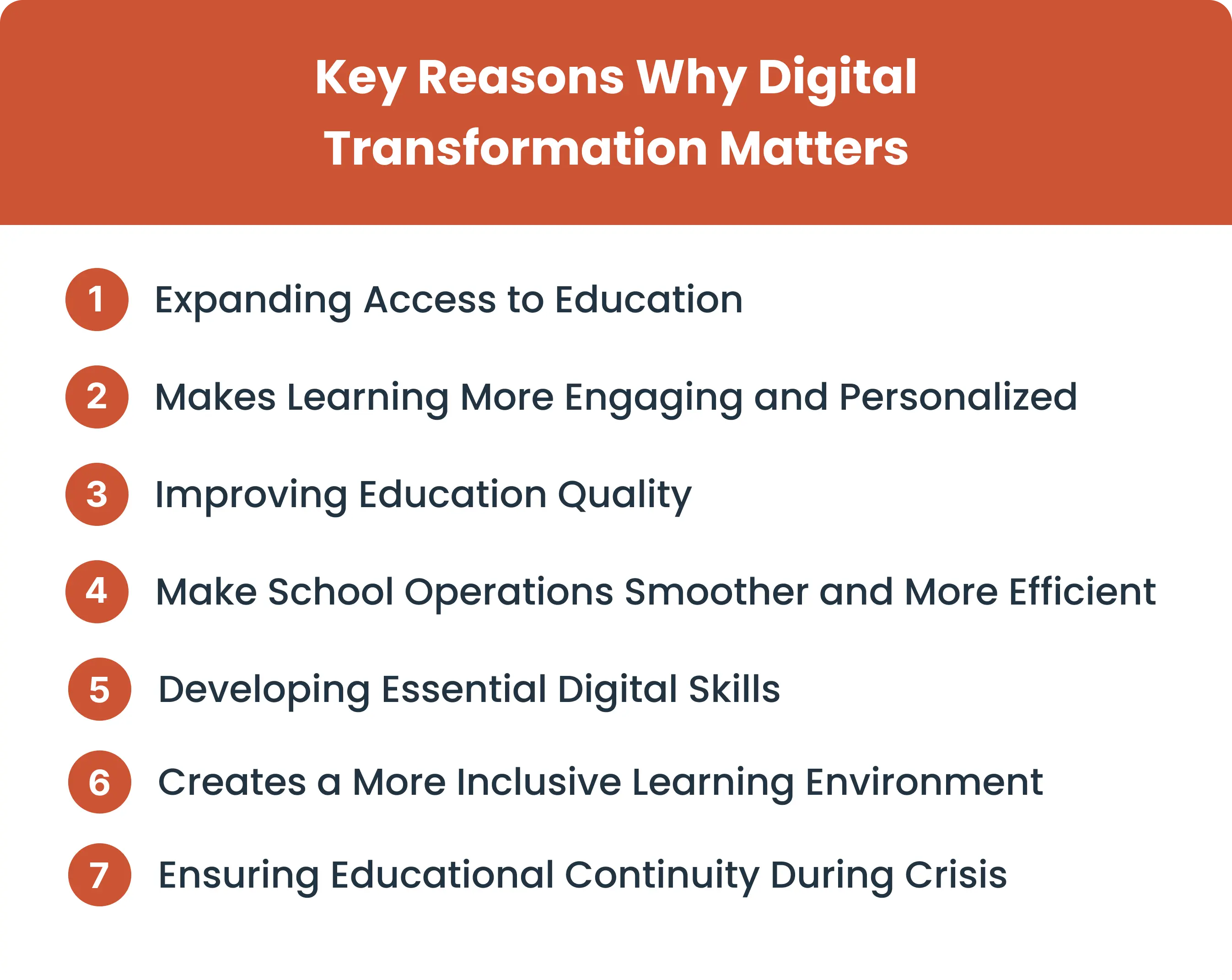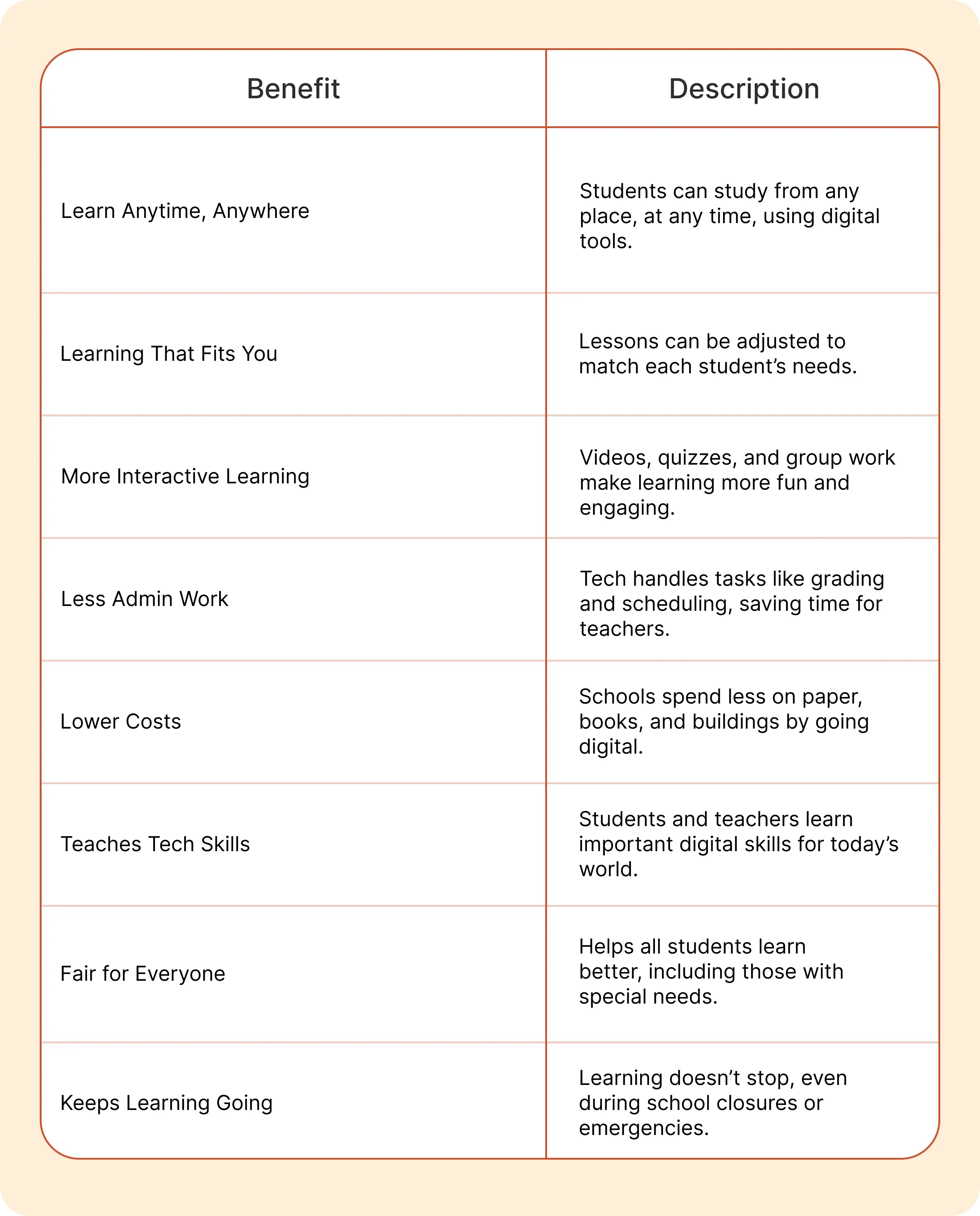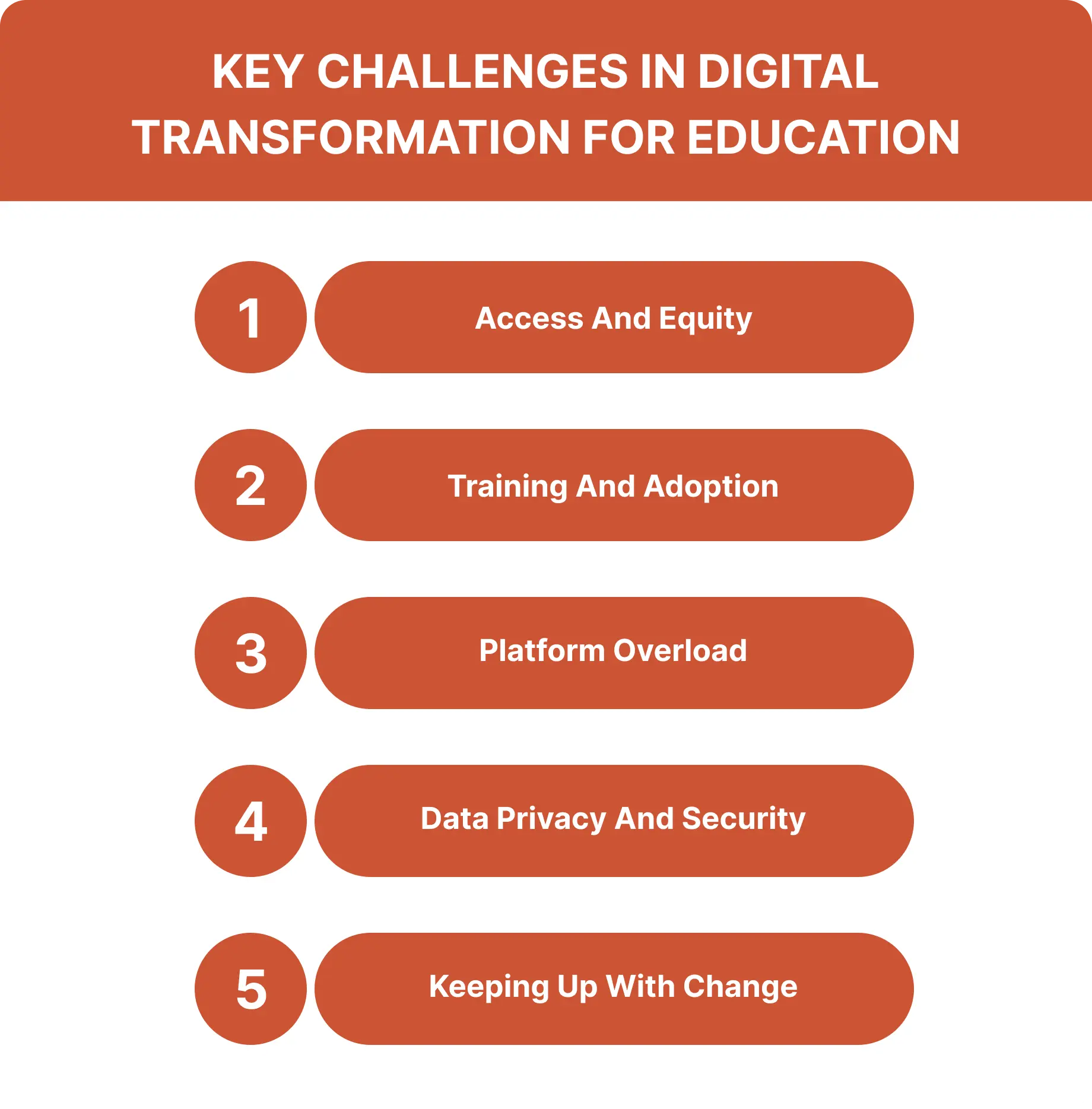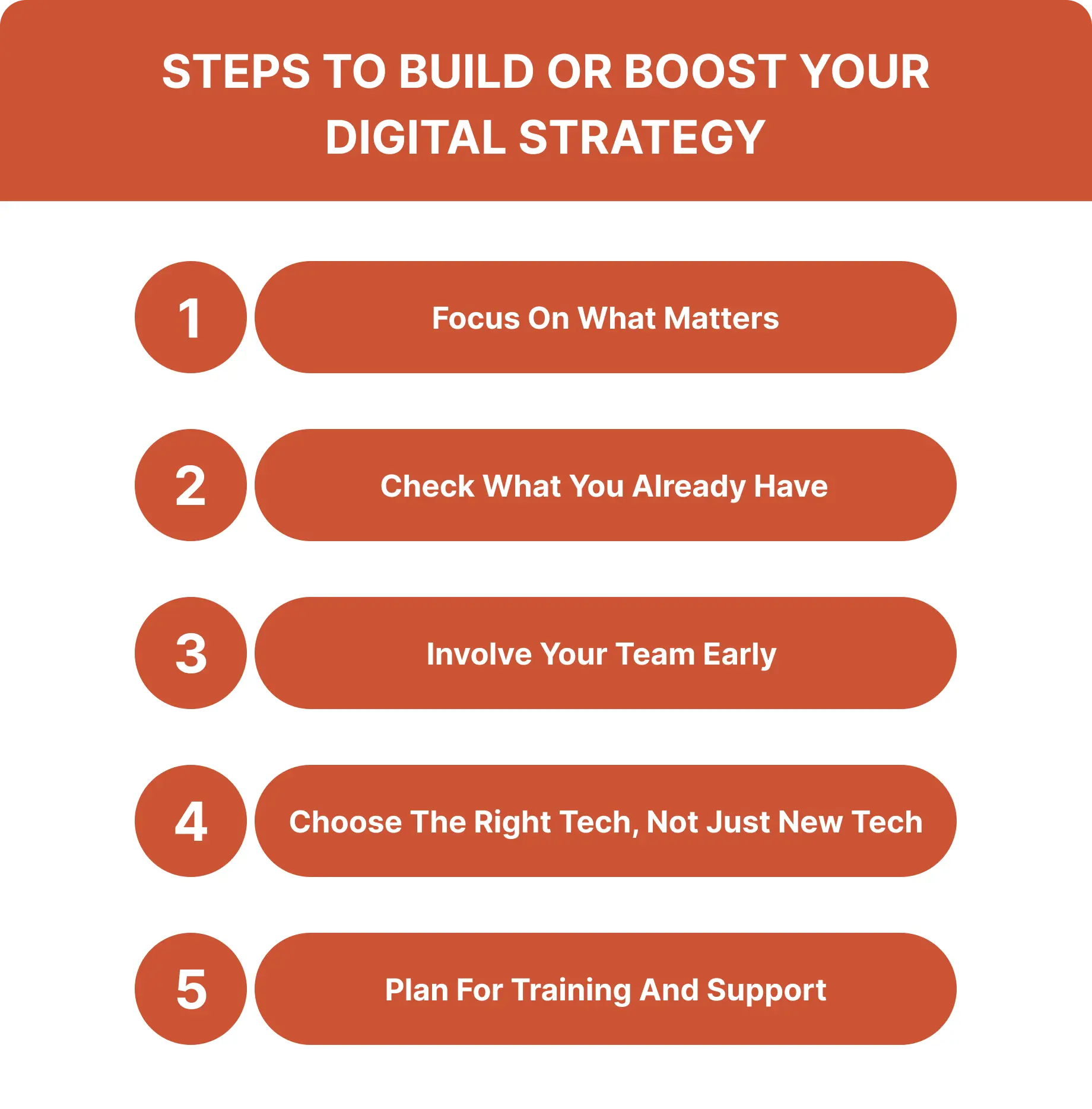Discover how digital transformation is reshaping education with smarter tools, personalized learning, and more inclusive, flexible learning environments.

We have all felt the shift that classrooms are no longer limited to four walls. Students are logging in from different time zones, teachers are using smart tools to track progress in real time, and learning has become more personalized than ever before.
Digital transformation in education is not just about adopting new technologies, it’s about creating better learning experiences for everyone involved. And while it’s not always a smooth process, the benefits are clear: more flexibility, deeper engagement, and tools that actually lighten the load for both educators and administrators.
A recent report found that nearly 70% of schools worldwide have accelerated their digital strategies since the pandemic, and they’re seeing real results.
In this post, we’ll explore the real, practical benefits of digital transformation in education supported by data, real-world examples, and insights to help you make smarter, future-ready decisions for your institution or platform.
Today’s learners are growing up in a digital world, and education needs to keep up. For schools, universities, and learning platforms, digital transformation isn’t just about tech; it’s about creating better outcomes, more inclusive access, and systems that truly support both educators and students. It’s how forward-thinking institutions stay relevant, resilient, and ready for what’s next.

Students can now learn from anywhere, at any time, using digital tools and online platforms.
It opens doors for those in remote areas or places with limited school resources.
No matter where they live or what challenges they face, all students have a better chance of getting a quality education.
Technology makes it easier for students to find and use learning materials whenever they need them.
It brings learning to life with videos, virtual classes, and interactive tools that keep students interested.
With the help of AI, students can also follow learning paths that match their interests and needs.
New teaching methods powered by technology make learning more interactive and suit different learning styles.
Students and teachers can easily work together through online chats, group activities, and shared projects.
Digital tools also give feedback, so students know how they’re doing and can keep improving along the way.
Technology helps take care of time-consuming tasks like student enrollment, grading, and class scheduling.
It simplifies daily operations, so teachers and staff can spend more time focusing on students.
Going digital also helps schools save money by reducing the need for paper, books, and physical space.
Using technology in education helps students and teachers become more comfortable with digital tools.
It also teaches important skills they’ll need for future jobs and everyday life in a tech-driven world.
Technology helps students with disabilities by giving them tools and support that fit their needs.
It also makes it easier to learn in different languages and understand different cultures, so more people can feel valued and supported.
Helps learning continue even when students can’t be in a regular classroom.

Education is going through a massive shift, and it’s not just about putting lessons online. It’s about rethinking how we teach, how students learn, and how technology can bring it all together in smarter, more meaningful ways.
Here are some of the biggest trends shaping that change:
Digital transformation in education is moving from theory to practice. Institutions are redesigning learning experiences with tech at the center.
Modern learning technologies are making classrooms more dynamic, helping students stay engaged and motivated.
Online learning platforms are opening up flexible options that fit different learning styles.
Smart classroom solutions are connecting physical and digital learning spaces.
Learning Management Systems are streamlining how educators manage, deliver, and track learning all in one place.
These trends aren’t just improving how we teach. They are changing what’s possible in education.

As exciting as digital transformation in education is, it doesn’t come without its challenges. Every new tool brings questions, and not all of them have quick fixes.
Here are a few common issues that schools, educators, and EdTech teams are working through:

Not all students have good internet or devices, which can make learning gaps worse.
New tools only work well when teachers and staff feel confident and know how to use them.
With so many online learning platforms, LMS tools, and EdTech products out there, it’s easy to get overwhelmed or create a disconnected learning experience.
As more student data goes digital, protecting that information becomes critical.
Technology evolves fast. Staying updated without putting too much pressure on your team or budget is tough.
There is no perfect path, but being aware of these challenges makes it easier to move forward with purpose and clarity.
You don’t need to do everything at once. A good digital strategy starts with small, thoughtful steps that actually make sense for your school, your team, and your students.
Here’s how to get going or make what you already have work better:

Focus on what matters: What are you trying to fix or improve? Better access to learning? Less admin work? More student engagement? Let that shape your direction.
Check what you already have: You might already have tools like an LMS or online platform that just need a bit of adjustment.
Involve your team early: Teachers and staff live this every day. Ask what’s working for them and what’s just getting in the way.
Choose the right tech, not just new tech: It’s not about the latest trend. It’s about what makes life easier and learning better.
Plan for training and support: Even the best tools won’t help much if people don’t know how to use them or can’t get help when they need it.
Digital transformation in education isn’t just a trend; it’s a necessary step towards building more flexible, inclusive, and effective learning environments. From personalized learning to streamlined operations, the benefits are already making a difference in classrooms around the world.
While the shift comes with challenges, the payoff is clear: more engaged students, teachers who feel more supported, and schools that are better prepared for the future. Whether you’re just beginning the journey or looking to improve your digital strategy, now is the time to adopt the tools and mindsets that will shape the next generation of learning.
Education is changing, and digital tools are helping us to grow and move forward as a community.
Divyesh Savaliya
Divyesh Savaliya
Divyesh Savaliya